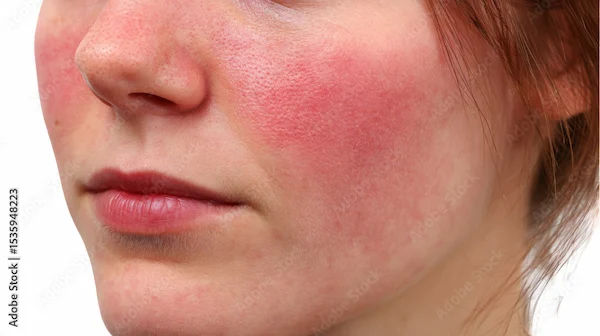Ear Wax Removal Techniques and Tips
Discover safe ear wax removal techniques and helpful tips for clear hearing. Learn when to try home remedies and when to see a doctor.

Written by Dr. Vasanthasree Nair
Reviewed by Dr. Rohinipriyanka Pondugula MBBS
Last updated on 19th Aug, 2025
.webp?tr=q-80,f-webp,w-350,dpr-2,c-at_max 700w)
Ear wax, also known as cerumen, is a natural substance produced by your ears to protect them from dust, bacteria, and other foreign particles. While ear wax is essential for ear health, excessive buildup can cause discomfort, hearing loss, or even infections. If you're experiencing ear wax problems, don’t worry—there are safe and effective ways to manage it. In this article, we’ll discuss what ear wax is and why it’s important, signs of excessive ear wax buildup, safe and effective ear wax removal techniques, when to seek medical help and tips to prevent ear wax buildup.
Understanding Ear Wax and Its Role
Ear wax is a sticky, yellowish substance produced by glands in your ear canal. It has several important functions:
Protection: Traps dust, dirt, and germs, preventing infections.
Lubrication: Keeps the ear canal moisturised, preventing dryness and itching.
Selfcleaning: Normally, ear wax moves outward naturally when you chew or talk, carrying debris with it.
However, sometimes wax can build up and cause problems.
Signs of Excessive Ear Wax Buildup
If you experience any of these symptoms, you may have too much ear wax:
Earache or a feeling of fullness in the ear
Hearing loss or muffled hearing
Ringing in the ear (tinnitus)
Itching or discomfort inside the ear
Dizziness (in rare cases)
If these symptoms persist, it’s best to consult a doctor rather than trying aggressive removal methods at home.
Consult Top Specialists
Safe Ear Wax Removal Techniques
Safe ear wax removal techniques include:
1. Over the Counter Ear Drops
How it works: Softens ear wax, making it easier to come out naturally.
Types: Waterbased (containing hydrogen peroxide or saline) or oilbased (containing olive or almond oil).
How to use: Follow the instructions on the package. Typically, you tilt your head and apply a few drops, then wait a few minutes before rinsing gently with warm water.
2. Warm Water Rinse (Ear Irrigation)
How it works: A gentle stream of warm water flushes out softened wax.
Steps:
Use a bulb syringe or a specialised ear irrigation kit.
Tilt your head and gently squirt warm (not hot) water into the ear.
Let the water drain out, along with loosened wax.
Caution: Do not use this method if you have a perforated eardrum or ear infection.
3. Mineral or Olive Oil Drops
How it works: Softens wax naturally.
Steps:
Warm a few drops of mineral or olive oil (not hot).
Tilt your head and apply 23 drops into the ear.
Stay in that position for 5 minutes, then wipe away excess oil.
Repeat for a few days if needed.
4. Hydrogen Peroxide Solution
How it works: Helps break down ear wax.
Steps:
Mix equal parts hydrogen peroxide (3%) and water.
Apply a few drops into the ear, wait a few minutes, then rinse gently.
Caution: Do not use it if you have sensitive skin or an ear infection.
5. Ear Wax Removal Kits
How it works: Some kits include softeners and small tools (like loops or scoops) to remove wax gently.
Caution: Avoid inserting anything deep into the ear canal to prevent injury.
What NOT to Do?
Some common ear wax removal methods can be harmful. Avoid:
Cotton swabs (Qtips): They push wax deeper, increasing blockage risk.
Sharp objects (hairpins, keys): Can damage the eardrum or ear canal.
Ear candling: No scientific evidence supports its effectiveness, and it can cause burns or injuries.
When to See a Doctor?
If home remedies don’t work or you experience severe symptoms, consult a doctor. Seek medical help if you have:
Severe pain or discharge (could indicate infection).
Sudden hearing loss.
Persistent dizziness.
A history of ear surgeries or eardrum issues.
Doctors use specialized tools (like suction devices or curettes) to remove wax safely.
Tips to Prevent Ear Wax Buildup
1. Avoid inserting objects into your ears (including cotton swabs).
2. Use ear drops occasionally if prone to wax buildup.
3. Dry your ears gently after swimming or showering to prevent moisture buildup.
4. Get regular checkups if you frequently experience wax blockages.
Need Professional Help? Consult Apollo 24|7
If you're struggling with ear wax buildup or discomfort, Apollo 24|7 offers expert ear care consultations. Taking care of your ears is simple with the right knowledge and precautions. Avoid harmful removal methods, follow safe techniques, and seek medical advice when needed. Your ears will thank you! Would you like to schedule an appointment? Visit Apollo 24|7 today!
Consult Top Specialists
Consult Top Specialists

Dr. Nagendra Kadapa
Ent Specialist
12 Years • MS (ENT)-Osmania Medical College, MS, Fellowship In Head And Neck Oncology , Worked as Registrar at Basavatarakam Indo American Cancer Hospital, Banjara hills, Hyderabad from 1st September 2012 to 30th August 2014 in Department of Surgical Oncology. Worked as Consultant in Department of ENT, Head and Neck Surgical Oncology at Simhapuri Hospital, Nellore from November 2015 to August 2017. Director and Chief Consultant at Nagender Hospital, Nellore from August 2017 till now Course : MS–OTORHINOLARYNGOLOGY AND HEAD & NECK SURGERY University : DR.NTR University of Health Sciences, Vijayawada, Andhra Pradesh, India Institute : Government ENT Hospital, Osmania Medical College, Koti, Hyderabad – 605 006. Duration : May 2009 – May 2012 BACHELOR OF MEDICINE BACHELOR OF SURGERY University : DR.NTR University of Health Sciences, Vijayawada, Andhra Pradesh, India Institute : Sri Venkateswara Medical College, Tirupati, Andhra Pradesh, India
Nellore
Apollo Speciality Hospitals, Nellore

Dr Nitin Kulkarni
Ent Specialist
20 Years • MBBS Rajiv Gandhi University of Health Sciences DLO NTR University of Health Sciences DNB National Board of Examination
Hyderguda
Apollo Hospitals Hyderguda, Hyderguda

Dr. Ashwani Kumar
Ent Specialist
11 Years • MBBS, DNB (Otorhinolaryngology)
Delhi
Apollo Hospitals Indraprastha, Delhi
(50+ Patients)
Dr Pujita Bandi
Ent Specialist
10 Years • MBBS, MS ENT, FICS,FAM(Fellowship In Aesthetic Medicine), MBA (Hospital Administration)
Chennai
Apollo Children Hospitals Greams Road, Chennai

Dr. Ramya R.
Ent Specialist
10 Years • MBBS MS ENT,HEAD & NECK SURGERY (PGI) FELLOW SLEEP SURGERY (SGH, SINGAPORE) FELLOW, WORLD SLEEP ACADEMY (WSA, WSS)
Hyderabad
Apollo Hospitals Jubilee Hills, Hyderabad




